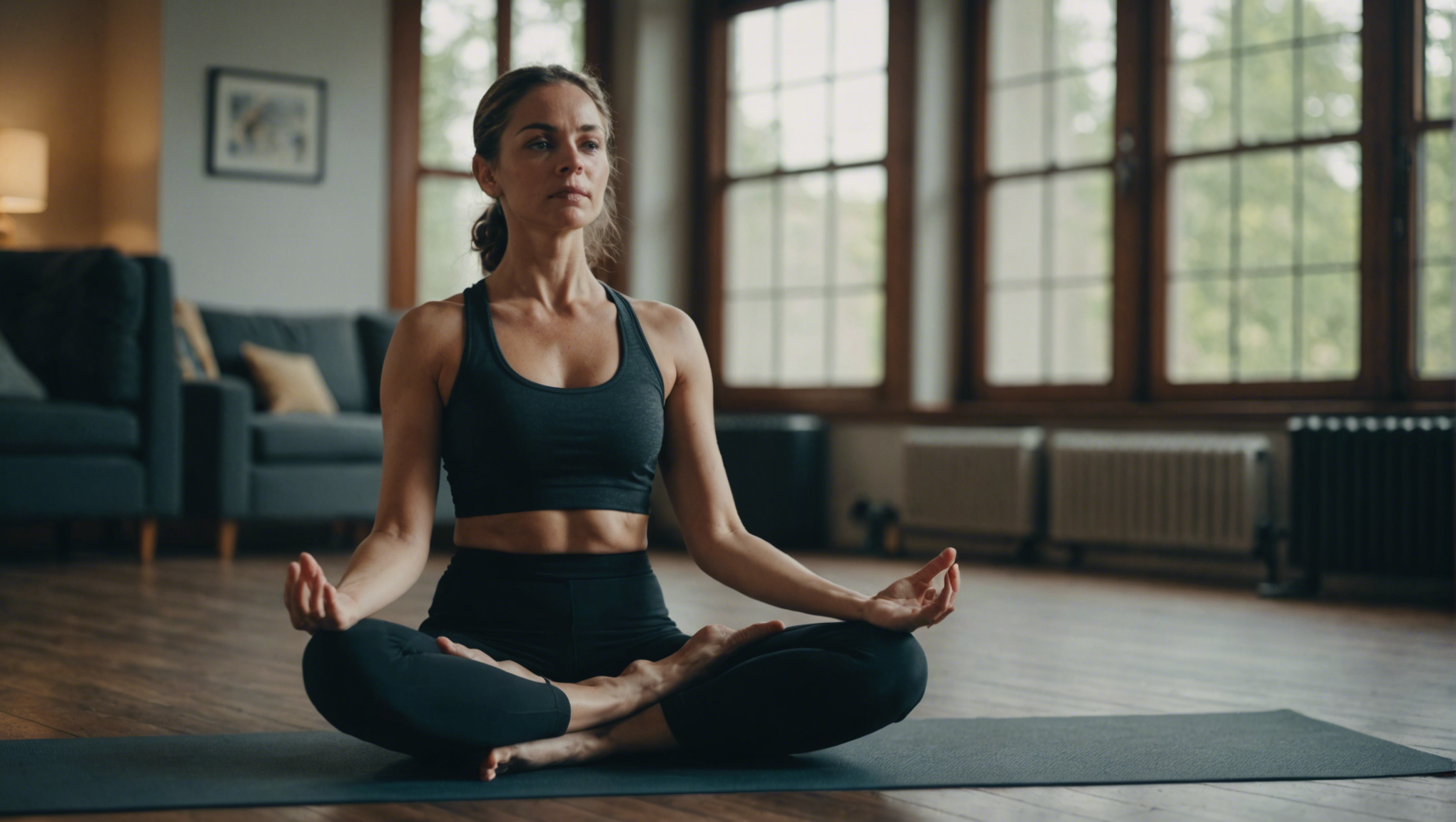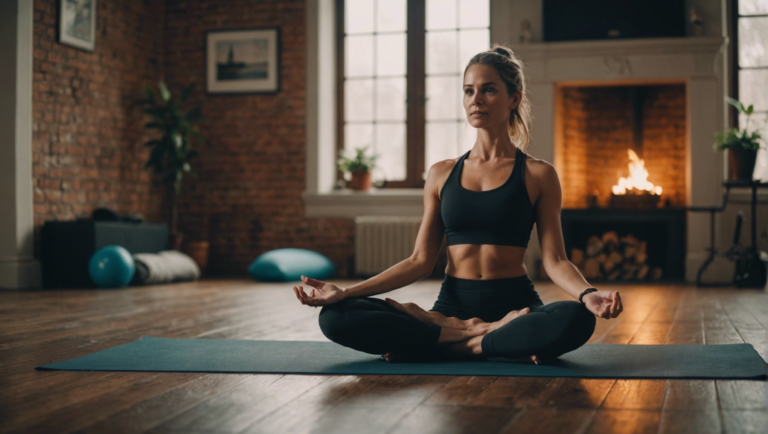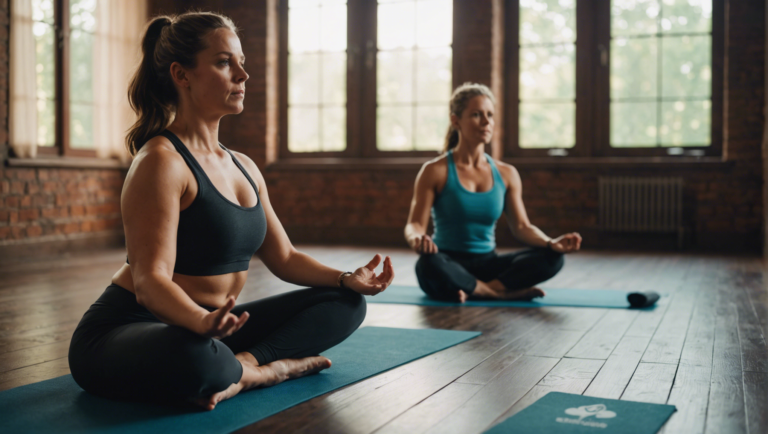How Often Can You Practice Yoga In A Day: A Comprehensive Guide
Determining the Ideal Frequency of Yoga Practices in a Day
Embarking on a yogic journey invites a myriad of questions concerning practice frequency. Understanding the optimal number of yoga sessions per day not only enhances physical flexibility and strength but also cultivates mental clarity and emotional stability. This article delves into expert insights and recommended practices, ensuring practitioners can tailor their yoga routines to suit personal health goals and schedules.
Recognize Your Personal Goals
Embarking on yoga practice starts with understanding personal goals. Whether seeking to improve flexibility, strength, mental health, or spiritual growth, each goal dictates a different approach. Those focusing on physical benefits might favor more frequent sessions, while individuals seeking spiritual growth may prioritize longer, less frequent practices. Assessing personal objectives provides clearer guidance on how often yoga should be incorporated into daily routines.
Listen to Your Body
The wisdom of your body is a paramount guide in determining yoga frequency. Practitioners should note that yoga encompasses a diverse range of styles — from the gentle flow of Hatha to the intense heat of Bikram. For beginners or those with specific health concerns, starting with less intensive practices and gradually increasing frequency and intensity is advisable. The body’s responses to different yoga styles will serve as an invaluable gauge in optimizing practice frequency.
Balancing Practice with Daily Life
Yoga should be a nourishing addition to daily life, not a source of stress due to time constraints. For most people, a daily practice of 20-30 minutes could suffice, providing both physical and mental benefits without overwhelming one’s schedule. However, for those with more flexible schedules or professional yogis, longer sessions or multiple short practices throughout the day may be beneficial and achievable.
The Role of Intensity and Style
Yoga’s diverse styles significantly influence how often one can practice. Intense styles like Ashtanga or power yoga may necessitate longer recovery times, suggesting a practice frequency of 3-4 times per week. Conversely, gentler sessions, such as Yin or Restorative yoga, can be practiced more frequently, even daily, to maximize benefits like stress reduction and increased flexibility.
Integrating Yoga with Other Activities
For individuals with rigorous exercise routines or physically demanding jobs, integrating yoga as a complementary practice offers numerous benefits. Yoga can serve as an excellent counterbalance to high-intensity workouts or physical labor, promoting recovery, flexibility, and injury prevention. In such cases, shorter, daily sessions focused on stretching and relaxation may be more beneficial than longer, more intensive practices.
The Significance of Rest and Variation
Rest is as crucial to a yoga practice as the poses themselves. rest days or choosing gentler styles for certain days ensures the body has time to recover, reducing the risk of injury. Additionally, varying yoga styles throughout the week can provide a holistic practice that nurtures the body, mind, and spirit, preventing monotony and fostering a deeper connection to yoga.
Expert Recommendations
Yoga experts often recommend starting with 2-3 sessions per week, gradually increasing frequency as one becomes more accustomed to the practice. Importantly, they stress the value of consistency over quantity; a shorter daily practice may yield more significant long-term benefits than infrequent longer sessions. Prioritizing regularity helps develop a sustainable yoga routine that supports ongoing physical and mental well-being.
In sum, the ideal frequency of yoga practices within a day is highly individualized, shaped by personal goals, physical condition, lifestyle, and the chosen yoga style. By listening to their bodies, respecting their limitations, and committing to a consistent practice, individuals can discover a yoga routine that enhances their well-being and complements their daily life. Ultimately, yoga is a personal journey of exploration and growth, with its frequency and intensity modulated by the practitioner’s evolving needs and aspirations.
Yoga Intensity Levels and Their Impact on Daily Practice
Yoga, an ancient practice rooted in Indian philosophy, has become a ubiquitous presence in wellness and fitness cultures worldwide. It offers a plethora of styles and intensity levels to cater to the varied needs and preferences of practitioners. The choice of intensity in one’s yoga practice can significantly influence the frequency and outcomes of these sessions. Understanding the nuances of yoga intensity levels and their impact on daily practice is crucial for anyone looking to integrate yoga into their lifestyle for health, flexibility, peace of mind, or spiritual growth.
The Spectrum of Yoga Intensity
Yoga practices range from gentle and restorative to physically demanding and everything in between. The intensity of a yoga session can be determined by several factors including the style of yoga, the duration of practice, the temperature of the room, and the individual’s effort and physical condition.
Gentle and Restorative Yoga: These styles focus on relaxation and stress relief. Positions are often supported with props and held for longer durations, facilitating deep relaxation of the body and mind. These practices are ideal for recovery days, beginners, or those looking for stress reduction.
Moderate Yoga Practices: This category includes styles like Hatha and Vinyasa, which balance between relaxation and physical effort. These practices provide a moderate workout, improve flexibility, and are suitable for a wide audience, offering a middle ground for those looking to enhance physical fitness without overexertion.
Intensive Yoga Styles: Ashtanga, Power Yoga, and Bikram (hot yoga) fall into this category. They demand higher physical effort, flexibility, and stamina, providing a vigorous workout that focuses on strength, endurance, and sometimes cardiovascular health.
Tailoring Practice to Individual Needs
The key to a sustainable yoga practice is listening to your body and understanding its needs. This means selecting a yoga intensity that aligns with your physical capabilities, goals, and how your body feels on any given day.
For Beginners: Starting with gentler practices helps in building a foundation, understanding the basics of breath control, and getting familiar with yoga poses without the risk of injury.
For Intermediate and Advanced Practitioners: Depending on your fitness level and experience, incorporating a mix of moderate to high-intensity practices can help in achieving specific goals like improving flexibility, strength, or mental focus.
Adjusting According to Physical and Mental State: Some days, your body might crave the intensity, while on others, it might ask for rest. Honor these requests by adjusting the intensity of your practice accordingly. Using yoga as a tool for self-care means respecting your body’s limits and needs.
Impact on Daily Practice
A balanced approach to yoga intensity can enhance daily practice, making it a enriching part of your routine. Regular, moderate-intensity yoga can improve physical and mental health without leading to burnout or injury. Conversely, too much high-intensity yoga without adequate rest can lead to overexertion and counteract the benefits of the practice.
Fostering Mindfulness and Consistency: varying levels of intensity can keep the practice interesting and sustain motivation. It also promotes a deeper connection with your body and its changing needs, fostering a mindful, consistent practice.
Physical and Mental Health Benefits: Regular yoga practice, tailored to the appropriate intensity, can lead to significant improvements in strength, flexibility, stress reduction, and overall well-being. It can also support injury recovery and prevention when practiced with awareness and proper alignment.
Yoga offers a versatile framework for healing, growth, and self-exploration. By understanding and respecting the impact of yoga intensity levels on your body, you can craft a practice that supports your journey towards health and fulfillment. Remember, the key is consistency, mindfulness, and alignment with your body’s needs. Listen to your body, and let it guide your practice toward balance and well-being.
Incorporating Various Yoga Styles into Your Daily Routine
Yoga, an ancient practice with its roots in India, has evolved into various styles that cater to different preferences and objectives. From the calm, stretching-focused Hatha yoga to the fast-paced, sweat-inducing Ashtanga, each style offers unique benefits and experiences. For individuals looking to diversify their wellness routine, blending multiple yoga styles into a daily regime offers a comprehensive approach to physical health, mental clarity, and spiritual tranquility.
Exploring the Multitude of Yoga Styles
Yoga’s diversity is one of its greatest strengths, allowing practitioners to choose from a range of styles based on their current needs, fitness levels, and wellness goals. Vinyasa yoga, known for its fluid movements and breath synchronization, is ideal for those seeking a dynamic and cardiovascular workout. In contrast, Yin yoga, with its longer-held postures, targets deep connective tissues, offering a meditative experience that promotes flexibility and inner peace.
Setting a Balanced Daily Yoga Routine
Creating a daily yoga schedule that incorporates various styles requires an understanding of one’s body and the specific benefits each style offers. A balanced routine might include Vinyasa yoga in the mornings to energize the body and stimulate the mind, followed by a relaxing session of Yin yoga in the evenings to unwind and promote restful sleep.
Benefits of a Diversified Yoga Practice
A diverse yoga routine not only prevents the monotony often associated with repetitive exercise regimens but also ensures a holistic approach to health. This practice enables individuals to build strength, enhance flexibility, boost cardiovascular health, and reduce stress levels. Moreover, the alternating focus on different body parts and aspects of wellness fosters a deeper connection to oneself, leading to improved self-awareness and well-being.
Listening to Your Body’s Needs
The key to successfully integrating multiple yoga styles into a daily practice is mindfulness and adaptability. Listening to your body’s needs and recognizing when to push for intensity and when to seek rest and recovery are crucial. Some days might call for the vigorous sequences of Power yoga, while others might benefit more from the restorative poses of Iyengar yoga.
The Role of Consistency and Commitment
While the diversity of a yoga routine can enhance engagement, the underlying pillars of consistency and commitment remain vital. Establishing a regular practice, even if it varies in style from day to day, helps cultivate discipline, facilitates progress, and deepens the yoga experience over time.
Navigating Challenges and Plateaus
Diversifying one’s yoga practice is not without its challenges, including the potential for confusion among beginners unfamiliar with the different styles. Seeking guidance from experienced instructors, whether through online platforms or in-person classes, can offer clarity and ensure a safe and effective practice. Additionally, incorporating mindfulness and meditation into the routine can aid in overcoming mental blocks and plateaus, further enriching the yoga journey.
Blending various yoga styles into a daily routine offers an enriching path to comprehensive wellness. This approach allows individuals to engage physically, mentally, and spiritually in their practice, fostering overall health and well-being. By being mindful of one’s needs, committed to regular practice, and open to exploring the rich tapestry of yoga, practitioners can create a fulfilling and balanced yoga regimen that supports lifelong health and harmony.
The Role of Rest and Recovery in Frequent Yoga Sessions
Yoga, an ancient practice known for its remarkable benefits on physical and mental health, has become a cornerstone in the wellness routines of many. With increasing awareness about its transformative potential, enthusiasts often ponder the balance between practice frequency and the necessity of rest periods. Understanding the role of rest and recovery in managing frequent yoga sessions is crucial for optimizing benefits while minimizing the risk of injury or burnout.
The Importance of Rest in Yoga
Yoga is not merely a physical exercise; it’s a holistic practice that integrates body, mind, and spirit. Each session—whether vigorous Vinyasa or gentle Yin—draws on the body’s energy reserves. Like any form of exercise, the physical aspects of yoga stress the body’s tissues, causing them to break down slightly. It’s during periods of rest that the body repairs and strengthens itself. Ignoring the need for rest can lead to overtraining, decreased performance, and increased injury risk.
Balancing Practice with Recovery
For yoga practitioners aiming to maximize their practice’s benefits, a balanced approach embracing both active sessions and recovery periods is essential. Recovery isn’t merely the absence of practice; it involves activities and practices that facilitate physical and mental recuperation. Including restorative yoga sessions or meditation can help maintain a daily practice’s rhythm without overburdening the system.
Listening to Your Body
A key principle in yoga is awareness, which not only applies to the alignment and execution of poses but also to recognizing the body’s signals. Muscle soreness, fatigue, and decreased enthusiasm for practice can all indicate the need for recovery. Adapting one’s yoga routine in response to these cues is vital for sustainable practice. Advanced practitioners often develop an intuitive understanding of their body’s needs, alternating between more intense practices and rest or recovery-focused activities as required.
The Role of Sleep and Nutrition
Rest transcends the bounds of time away from the mat. Quality sleep and proper nutrition play critical roles in the recovery process, facilitating the body’s repair mechanisms. Ensuring adequate sleep and a balanced diet rich in nutrients supports the physical demands of frequent yoga practice, enhancing overall well-being and performance.
Structuring Your Practice for Optimal Recovery
Creating a yoga routine that includes adequate rest requires thoughtful consideration of one’s individual capacity, goals, and life circumstances. a variety of practices, from dynamic asana sequences to contemplative meditation or pranayama (breath work), ensures a holistic approach. For those engaging in daily practice, alternating between physically demanding sessions and gentler, restorative practices can help balance the scales of activity and rest.
Mindfulness and Rest
Mindfulness, a practice often associated with yoga, extends into the realm of rest and recovery. Being mindful about one’s need for rest, acknowledging the body’s limits, and being willing to adjust one’s practice accordingly are testament to a mature approach to yoga. This mindfulness fosters a deeper connection to one’s body, enhancing the overall yoga journey.
The Psychological Benefits of Recovery
Recovery periods are not only vital for physical recuperation but also for mental and emotional rejuvenation. They provide an opportunity to reflect on one’s practice, assimilate the experiences, and cultivate a state of inner calm. This balanced approach supports sustained enthusiasm for practice, reduces stress, and contributes to a more profound and fulfilling yoga experience.
In the pursuit of a balanced yoga practice, recognizing the critical role of rest and recovery is paramount. By honoring the body’s need for recuperation, practitioners can enjoy a sustainable, injury-free journey in yoga, enriched by both the physical and spiritual benefits this ancient practice offers. The key lies in cultivating an attentive, respectful relationship with one’s own body, allowing for a yoga practice that truly embodies the principles of balance, harmony, and well-being.
Tailoring Your Yoga Schedule: Tips for Beginners and Advanced Practitioners
Yoga, an ancient practice that unites mind, body, and spirit, has evolved into a versatile discipline tailored to individuals’ needs, regardless of their experience level. The journey from a beginner to an advanced practitioner is filled with growth, discovery, and adjustment, particularly when it comes to scheduling and frequency of practice. Crafting a yoga schedule that aligns with your lifestyle, goals, and physical capabilities is essential for nurturing your practice and ensuring it enhances your well-being. This article provides essential tips for both beginners and advanced practitioners to help tailor a yoga routine that suits their unique journey.
Establishing Your Foundation: Tips for Beginners
Embarking on a yoga journey can be exciting yet overwhelming due to the plethora of styles, practices, and philosophies. For beginners, establishing a solid foundation is crucial for a sustained and rewarding practice.
-
Assess Your Physical Condition and Goals: Before diving into yoga, take a moment to understand your physical health and what you aim to achieve with your practice. Whether it’s improving flexibility, building strength, reducing stress, or boosting mindfulness, your goals will influence the frequency and type of yoga you might find most beneficial.
-
Start with Guided Sessions: Opt for classes or online guided sessions designed for beginners. These will introduce you to the basic poses (asanas), breathing techniques (pranayama), and the practice’s philosophical aspects in a structured and safe manner.
-
Establish a Sustainable Routine: Initially, aim to practice two to three times a week. This schedule allows your body to adapt to new movements and your mind to assimilate the practice’s mental aspects without overwhelming you.
Advancing Your Practice: Strategies for Experienced Yogis
For those who have been embracing yoga for some time, the focus shifts towards deepening the practice, exploring advanced asanas, and possibly incorporating philosophical studies or meditation into their routine.
-
Listen to Your Body and Intuition: Advanced practitioners benefit from being in tune with their bodies and understanding when to push forward or pull back. While it’s tempting to practice daily, incorporating rest days or incorporating gentler forms of yoga can prevent burnout and injury.
-
Diversify Your Practice: Experiment with different yoga styles, attend workshops, and retreats, or consider training in a specific yoga discipline. Advanced yogis find growth in variety, challenging their bodies and minds in new ways and keeping their practice fresh and engaging.
-
Incorporate Meditation and Pranayama: At advanced stages, integrating meditation and pranayama can elevate your practice, offering deeper mental clarity, focus, and a stronger connection with the spiritual elements of yoga.
Balancing Practice with Life: Tips for All Practitioners
Regardless of where you are in your yoga journey, finding balance between practice and daily life is essential for a fulfilling and sustainable yoga experience.
-
Be Flexible with Your Schedule: Understand that some days will be busier than others. If you miss a practice, don’t be hard on yourself. Instead, aim for consistency over perfection, and adapt your schedule as needed.
-
Create a Dedicated Space: Having a specific area in your home for yoga can make it easier to commit to your practice. Even a small, dedicated corner can set a mood and cue your mind and body for yoga.
-
Join a Community: Whether it’s a local studio, online platform, or social media group, being part of a yoga community can provide support, inspiration, and motivation to maintain your practice.
Crafting a personalized yoga schedule demands introspection, patience, and flexibility—qualities inherent to yoga itself. For beginners and advanced practitioners alike, the key to a rewarding yoga journey lies in listening to one’s body, respecting one’s limits, and being open to growth and change. By adopting these tips, yogis at any level can develop a tailored yoga schedule that fosters physical health, mental clarity, and spiritual growth, illustrating the transformative power of this ancient practice.
Conclusion
Crafting a yoga practice that aligns with our individual needs, capacities, and goals can transform it from a mere routine into a profound journey of self-discovery and wellness. Navigating through this journey requires understanding the balance between discipline and gentleness, between the vigor of our endeavors and the wisdom to rest. As we peel through the layers of determining the ideal frequency of practicing yoga in a day, integrating various intensities and styles, and recognizing the indispensable role of rest and recovery, we are guided to a path that fosters growth, resilience, and harmony within ourselves.
Determining the right frequency of yoga practices in a day sets the foundation of a sustainable and enriching yoga journey. It requires a delicate balance, acknowledging that while regular practice is key to progress, overdoing it can lead to burnout or injury. Listening to our body’s signals and respecting its limits is not just an act of self-care, but a profound practice of yoga itself. This mindfulness ensures that our practice evolves from being a rigid schedule to a responsive dialogue with our physical and mental states.
Yoga intensity levels play a pivotal role in shaping our daily practice. Each yogi’s journey is unique, and as such, understanding how different intensities impact our body and mind is essential. Gentle sessions can soothe and nurture, offering a restorative embrace, while more rigorous practices challenge our limits and promote strength and resilience. Embracing this spectrum of intensities allows us to cater to our diverse needs, ensuring a holistic approach to our well-being.
The richness of incorporating various yoga styles into our daily routines is akin to having a palette of colors to paint our canvas of wellness. From the serene flow of Hatha to the dynamic rhythms of Vinyasa, each style offers unique benefits and experiences. This diversity not only prevents monotony but also allows us to explore different facets of our being. It encourages a beautiful exploration of our capacities, preferences, and the boundless possibilities within the realm of yoga.
Understanding the role of rest and recovery in frequent yoga sessions is akin to appreciating the silence between the notes in a melody. It is in these moments of rest that the body assimilates the benefits of practice, heals, and rejuvenates. Rest days are not a deviation from our practice but an integral part of it. They remind us that growth occurs not just in the exertion but in the surrender, in the gentle acceptance of our need to recover.
Tailoring your yoga schedule, whether you are a beginner or an advanced practitioner, is an art and science. Beginners are encouraged to approach their practice with curiosity and patience, gradually building their foundation with consistent, manageable sessions. Advanced practitioners, on the other hand, might explore deeper or more demanding practices while staying attuned to the body’s need for balance and rest. The journey of yoga is not linear; it is a spiral of learning, unlearning, and relearning.
Embarking on this yoga journey, understanding its depth, and personalizing it illustrates a beautiful commitment to self-care and personal growth. It teaches us to be patient and persistent, gentle yet strong, and most importantly, to be profoundly connected with ourselves. By determining the ideal frequency of yoga, integrating various intensities and styles into our practice, and honoring the essential role of rest and recovery, we create a yoga practice that is not only sustainable but also deeply transformative. This path invites us to explore the vastness within, leading to a state of harmony, resilience, and unparalleled wellness that reverberates through every aspect of our lives. Embracing this journey, we are reminded of the powerful truth that yoga is not just a practice but a profound way of living.



